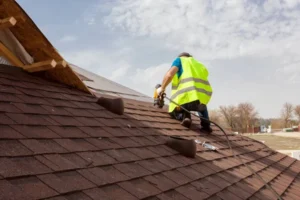At some point, all homeowners will need to address issues with their plumbing. But, if you’re prepared with the right tools and knowledge, many of these issues can be easy to fix.
The drip-drip of a leaky faucet or the whoosh of a running toilet can be incredibly annoying, but they are also silent warning signs that it’s time to call in a professional plumber.
Clogged Drains
Clogged drains are one of the most common residential plumbing problems and a significant pain in the neck to deal with. They can be caused by hair, food scraps, grease, and more that collect in your pipes until they finally stop working. Often, a simple solution like plunging or using a drain snake will fix the problem and get your plumbing back up and running quickly.
To begin with, make sure that you shut off the water supply to the affected area of your home before beginning any work on a clogged drain or toilet. It will help prevent accidentally turning on a running drain or overflowing toilet and causing additional damage to your home. Then, try to locate the source of your clog by looking down the drain (this may be tricky in bathrooms where caps on shampoo bottles or hair ties can hide). You can also use a plunger, a drain snake, or even a hand-held drain auger to break up, remove the clog, and get your pipes back up and running.
Leaky Faucets
Dripping faucets may seem minor, but constant drips waste gallons of water over time. The good news is that most do-it-yourselfers can fix this problem with some know-how and the right tools.
The first thing to do is find and shut off the water supply to the fixture, using the valves under sinks or behind toilets. Then, remove the handle and clean the O-ring (a circular disc that holds the stem screw) with vinegar or another acidic solution. You can also buy seat-grinding tools at most hardware stores to reshape the valve seat, which is often the cause of leaky spouts.
If you still have trouble, try replacing the washers, seals, or gaskets. Finally, insulate exposed pipes in unheated areas to avoid freezing and bursts. Having these plumbing problems fixed promptly will save you money and hassle. That is why it’s essential to understand your home’s plumbing system and learn how to perform basic maintenance tasks like turning off the water and locating fixture shutoff valves.
Leaking Pipes
Pipe leaks can be caused by rust, extreme water pressure, stubborn clogs, or loose or cracked seals. They are often hard to spot because most of your pipes are in your walls, beneath your floors, or in the attic. You may be able to detect them by listening to dripping sounds or noticing wet spots on your walls or ceilings.
These issues are more common in older homes, especially those with copper pipes. Call a plumber to perform plumbing remodeling if you notice an increase in your water bill or discover leaks or moisture in any area of your home.
When a leaky pipe is found, shutting off the water supply immediately, if possible, is crucial. Most supply lines have a valve that can be turned off clockwise so you don’t flood your home. Once the water is off, place a bucket or puddle absorber underneath any affected areas to prevent further damage and moisture accumulation.
Sewage Backup
An overflowing toilet is more than just unpleasant. Standing sewage can be a severe health risk as it may contain harmful bacteria and viruses that can cause illnesses in people and pets. In the event of a sewage backup, contacting a plumber without delay is vital. Observing water backing up in more than one drain may indicate an issue with your main sewer line. The best way to prevent this is by regularly inspecting and cleaning your home’s drain lines. It’s also important not to pour grease down your drains as this will harden and clog them.
Other common signs of a sewage backup include:
- Slow-moving drains.
- Gurgling noises from your toilets (which are caused by air bubbles trapped in a clogged line).
- Wetness around floor drains.
It’s also a good idea to flush toilet paper, waste from the garbage disposal, and kitchen scraps down your drains. Items like cleaning wipes, tampons, diapers, and facial tissues should not be flushed as they don’t degrade properly.









